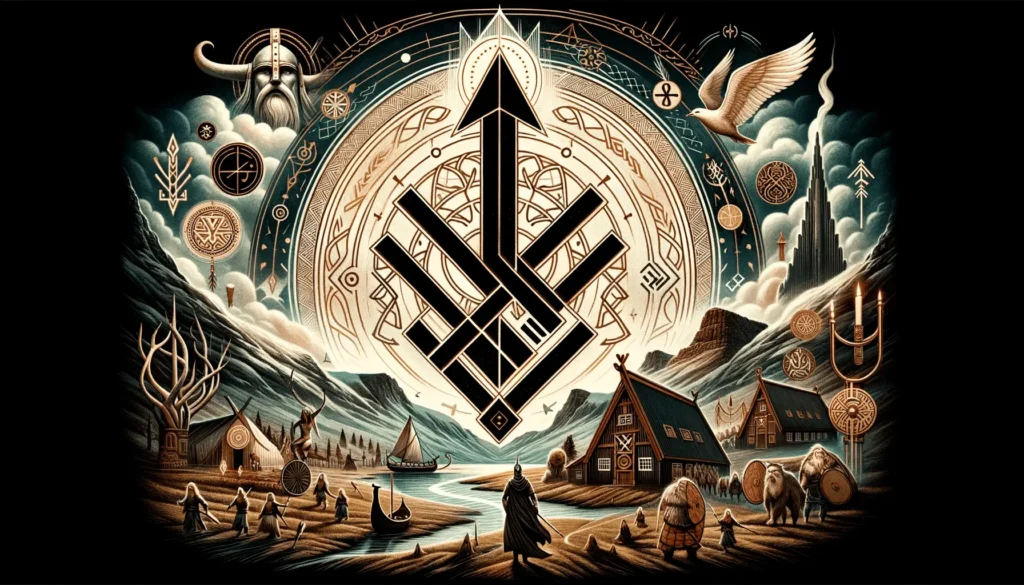The term “örviri” emerges from the depths of ancient Nordic culture, particularly from Iceland, weaving a tapestry of myth, tradition, and modern interpretations. This article delves into the multifaceted nature of örviri, exploring its historical roots, cultural significance, and contemporary relevance.

The Historical and Mythological Roots of Örviri
Örviri, a term steeped in the rich tapestry of Icelandic lore, is derived from two Icelandic words: “ör” (arrow) and “virki” (fortification). This amalgamation translates to “arrow fortification,” a concept deeply intertwined with Norse mythology and the belief in powerful mythical beings like gods, elves, and giants. In ancient times, örviri symbolized protection against these supernatural entities, serving as a talisman against negative energies, natural disasters, and malevolent spirits.
Örviri in Traditional Icelandic Architecture
Beyond its spiritual connotations, örviri holds a place of reverence in traditional Icelandic architecture. The symbol, often found on old houses and buildings, represents good luck and protection. Its most common depiction is an upward-pointing arrow intersected by three horizontal lines, symbolizing the unification of sky, land, and sea under a protective force.
The Evolution of Örviri’s Meaning
Originally, örviri in old Icelandic sagas described the act of uniting disparate elements or people. Over time, its meaning evolved, often used to depict courageous warriors who united clans through bravery and leadership. These warriors were seen as skilled negotiators and peacemakers.
Örviri: A Modern Interpretation
Today, örviri transcends its ancient roots, embodying concepts of intelligence, knowledge, and spiritual depth. It’s synonymous with wisdom and insight, often used to describe individuals with exceptional intellect or profound spiritual understanding. Örviri also refers to ideas that challenge conventional thinking and inspire deep reflection.
The Practice of Örviri
In its spiritual practice, örviri involves connecting with nature, the spirit world, and one’s inner self. It’s a quest for guidance, wisdom, and healing, tapping into the energies of nature through rituals and ceremonies. This practice includes elements of shamanism, where practitioners enter altered states of consciousness to communicate with the spirit world.
The Benefits and Drawbacks of Örviri
Örviri offers various benefits, including improved mental health, boosted immunity, pain relief, digestive health, better sleep quality, and potential anti-cancer properties. However, it’s important to note potential drawbacks, such as allergic reactions in some individuals.
Conclusion
Örviri, with its roots in ancient Icelandic culture, continues to fascinate and inspire. Its evolution from a mythological concept to a symbol of wisdom and protection highlights the enduring nature of cultural beliefs and their adaptability over time. As we embrace holistic approaches to health and wellness, örviri’s blend of tradition and modernity offers a unique perspective on the power of cultural heritage in our contemporary world.
This article aims to provide a comprehensive understanding of örviri, blending historical insights with modern interpretations. It’s tailored to intrigue readers interested in cultural history, mythology, and holistic practices, offering a blend of factual information and thoughtful analysis.